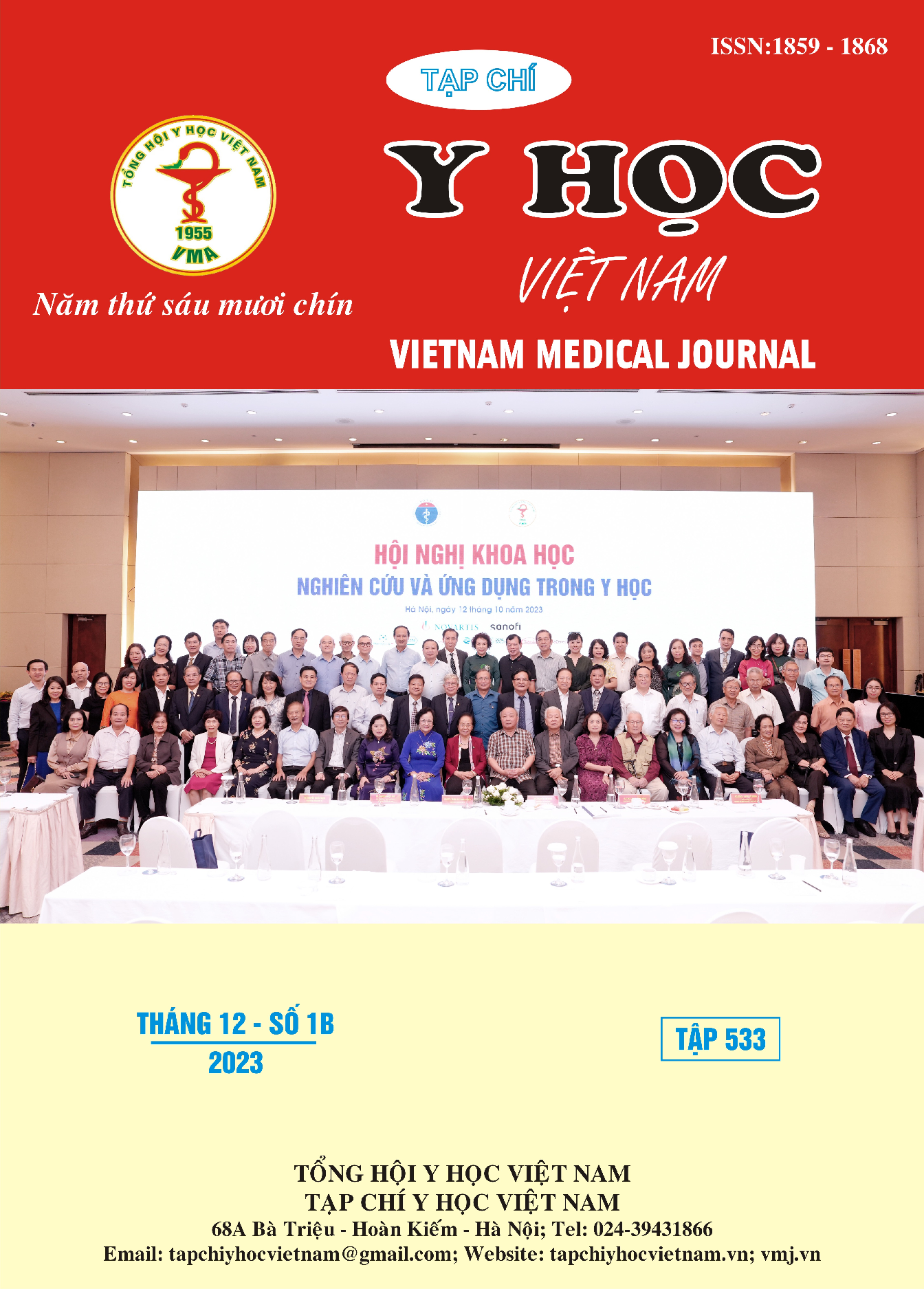CLINICAL AND PARACLINICAL CHARACTERISTICS OF PATIENTS READMITTED AFTER COVID-19 AND ASSOCIATED RISK FACTORS FOR LENGTH OF HOSPITAL STAY
Main Article Content
Abstract
Background: About 10-20% of COVID-19 patients are readmitted to the hospital within 30 to 90 days after discharge. This readmission can lead to adverse outcomes, increased mortality, and impose economic and healthcare burdens on families and society. Objectives: Describe the clinical and paraclinical characteristics of COVID-19 patients who are readmitted to the hospital and identify risk factors associated with length of hospital stay. Methods: A prospective cohort study was conducted on 52 COVID-19 patients readmitted to the hospital during the first six months of 2022. Results: The average age was 63.48 ± 2.1 years. Among them, 27% had a history of severe COVID-19 and 11.5% had a history of critical COVID-19. Common reasons for readmission were difficulty breathing, cough, fever, and chest pain. The majority of readmitted patients (67.3%) required respiratory support, and 38.5% of them required mechanical ventilation. Most patients had increased D-Dimer levels (average 2029.07 ± 406.61) and increased CRP levels (average 50.97 ± 8.95). Chest X-ray abnormalities were the most common imaging findings. The average length of hospital stay was 24.5 days, and the majority of patients (71.2%) had a hospital stay longer than 14 days. Age, severity of previous COVID-19, need for mechanical ventilation, CRP, urea, and lung consolidation on chest X-ray were positively correlated with length of hospital stay, while Hb and LDH were negatively correlated. Independent risk factors for a hospital stay longer than 14 days were a history of severe COVID-19 and the presence of lung consolidation on chest X-ray at admission. Conclusion: COVID-19 patients who are readmitted to the hospital often have respiratory difficulties or respiratory failure and require respiratory support. Most hospital stays last longer than two weeks. Independent risk factors for a longer hospital stay include a history of severe COVID-19 and lung consolidation on chest X-ray at admission.
Article Details
References
2. Günster C, Busse R, Spoden M, Rombey T, Schillinger G, Hoffmann W, et al. 6-month mortality and readmissions of hospitalized COVID-19 patients: A nationwide cohort study of 8,679 patients in Germany. PLoS ONE. (2021) 16:e0255427. doi:10.1371/journal.pone.0255427
3. Haji Aghajani M, Miri R, Sistanizad M, et al. Risk Factors of Readmission in COVID-19 Patients; a Retrospective 6-Month Cohort Study. Arch Acad Emerg Med. 2022;10(1):e48. Published 2022 Jun 20. doi: 10.22037/aaem.v10i1.1514
4. Jeon WH, Seon JY, Park SY, Oh IH. Analysis of Risk Factors on Readmission Cases of COVID-19 in the Republic of Korea: Using Nationwide Health Claims Data. Int J Environ Res Public Health. (2020) 17:5844. doi: 10.3390/ ijerph17165844
5. Mooney CJ, Hone L, Majid M, Cai J, Mieiro L, Fink DL. A Single centre study on the thirty-day hospital reattendance and readmission of older patients during the SARS-CoV-2 pandemic. Age Ageing. (2021) 50:i12–42. doi:10.1093/ageing/ afab030.71
6. Muzammil TS, Gangu K, Nasrullah A, et al. Thirty-Day readmissions among COVID-19 patients hospitalized during the early pandemic in the United States: Insights from the Nationwide Readmissions Database. Heart Lung. 2023;62:16-21. doi:10.1016/j.hrtlng.2023.05.014
7. Vietnam Ministry of Health. Information of COVID-19; access August 29th 2021 https://moh.gov.vn/tin-noi-bat/-/asset_publisher/3Yst7YhbkA5j/content/cap-nhat-thong-tin-ve-dich-benh-viem-uong-ho-hap-cap-COVID-19-tong-hop-?inheritRedirect=false
8. Yeo I, Baek S, Kim J, Elshakh H, Voronina A, Lou MS, et al. Assessment of thirty-day readmission rate, timing, causes and predictors after hospitalization with COVID-19. J Intern Med. (2021) 290:157–65. doi:10.1111/joim.13241


